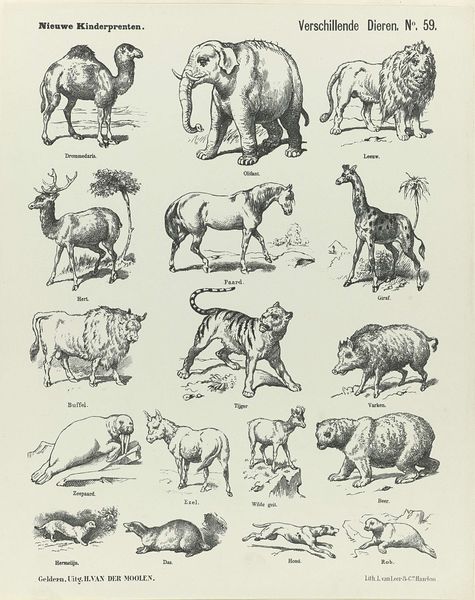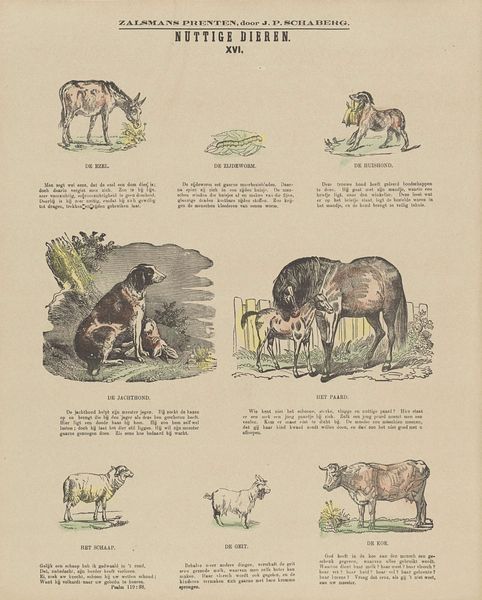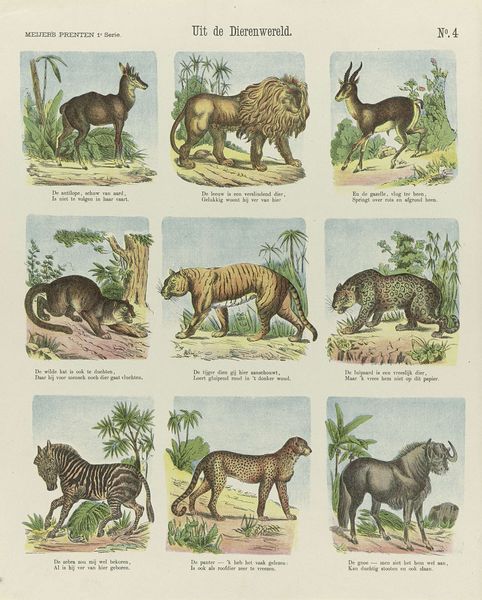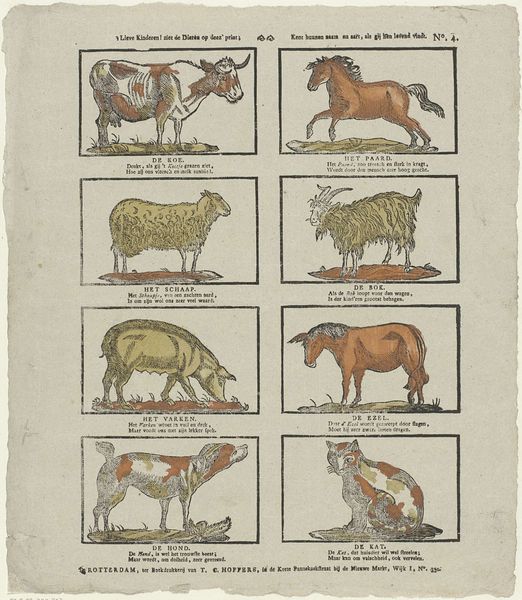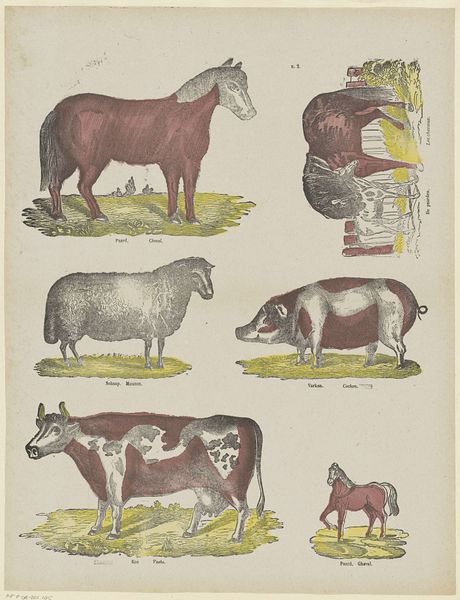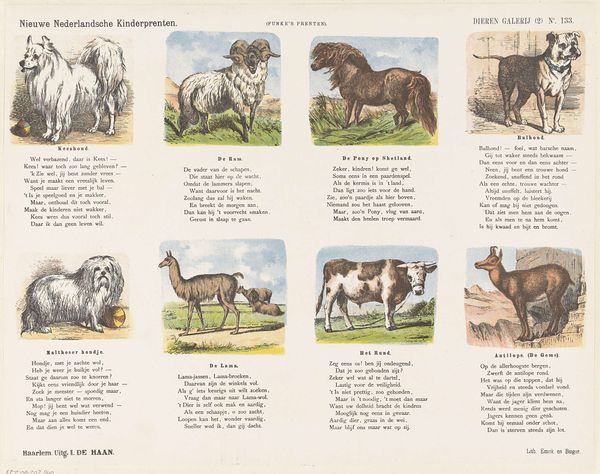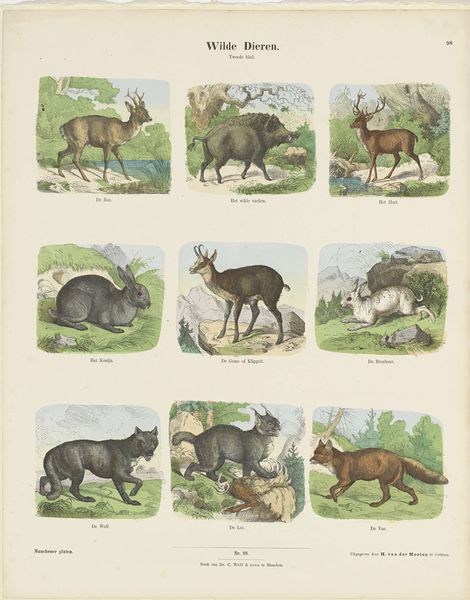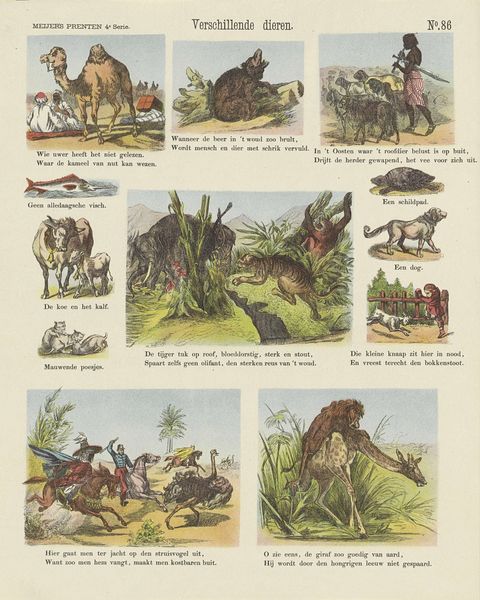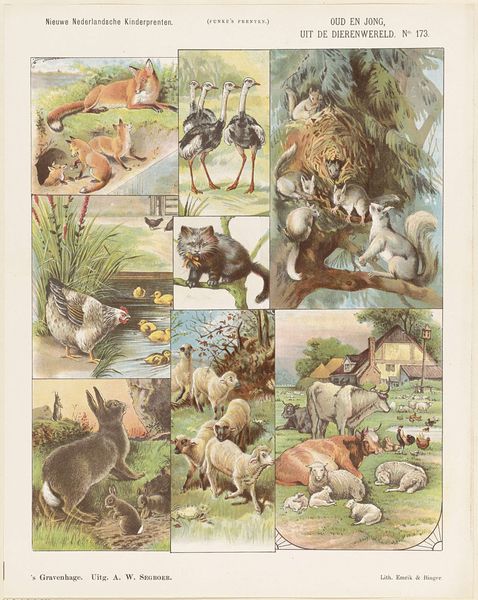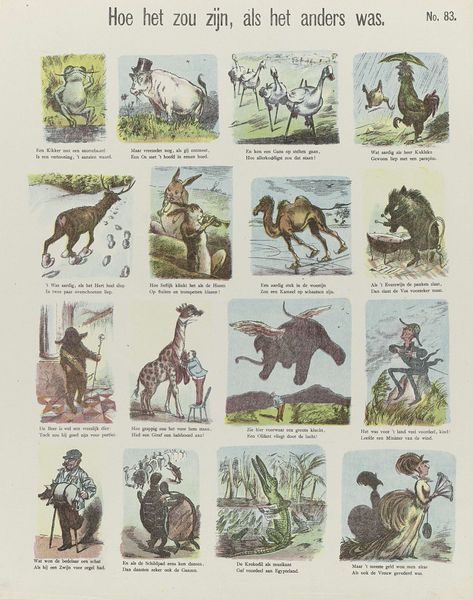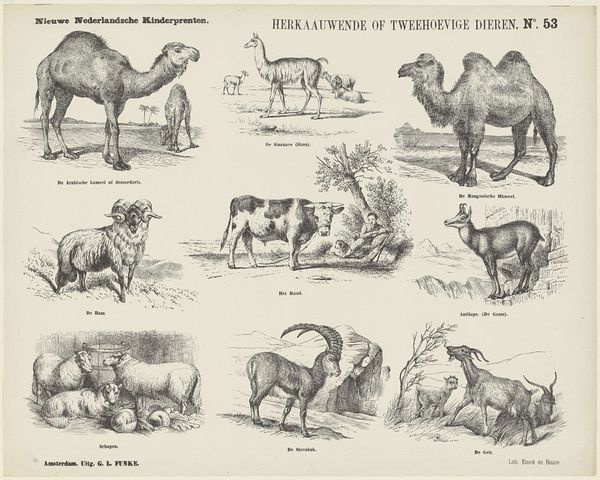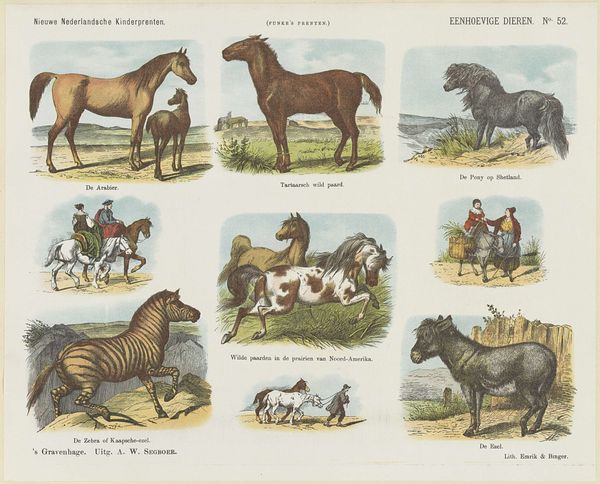
drawing, lithograph, print
#
drawing
#
comic strip sketch
#
animal
#
lithograph
# print
#
sketch book
#
personal sketchbook
#
sketchwork
#
journal
#
thumbnail sketching
#
sketchbook drawing
#
watercolour illustration
#
genre-painting
#
storyboard and sketchbook work
#
academic-art
#
sketchbook art
Dimensions: height 430 mm, width 343 mm
Copyright: Rijks Museum: Open Domain
Curator: Ah, here we have "Verschillende dieren," or "Various Animals," a lithograph from 1881, likely part of a series of educational prints. What’s your initial take on it? Editor: It’s…charmingly awkward? There’s a very definite ‘one of each’ feeling about it. Almost like a pre-internet bestiary – a valiant but slightly clumsy attempt to capture the whole animal kingdom on one page. I mean, look at that giraffe! It seems surprised to exist. Curator: The academic-art style certainly lends a particular air, doesn't it? Each animal is rendered with a certain detached precision, a desire to document rather than, say, evoke wonder. There’s a stillness to them that’s fascinating, almost like specimens pinned to a board. Notice how each one is neatly labeled below with its name. Editor: I do find the choice of animals interesting. There’s the somewhat exotic – a camel, an elephant – alongside the more commonplace – a horse, a pig. Is this about showcasing diversity, or about ordering and classifying the world? Perhaps both, right? The print acts as a kind of visual taxonomy, where animals are arranged as much for the convenience of observation. And note the animals from all corners of the earth! Curator: Precisely. The piece creates a microcosm of the world and, more significantly, human knowledge and control over nature in that world. The poses are telling too. Most are in profile, reinforcing that sense of scientific observation, except that somewhat startled looking tiger in an active position. I wonder, also, about the choice of lithography; was it to do with allowing for reproducibility, so these could be used widely in education? Editor: Yes, probably making them available for children is interesting. Thinking about the era – 1881 – it speaks to a time of exploration, cataloging, defining…but it's more about making the world understandable. I look at this and imagine eager students poring over it in some dimly lit classroom. There is a definite nostalgia aspect in looking at it. Curator: A fair point. It has become an image invested in cultural memory as a teaching tool. It reminds me of the urge to make sense of our relationship with nature, and how even then it can carry unexpected whimsy and character in execution. Editor: Absolutely, a journey of visual order, charming oddness, and all the human elements tied up inside of nature and knowledge. What a thought!
Comments
No comments
Be the first to comment and join the conversation on the ultimate creative platform.

